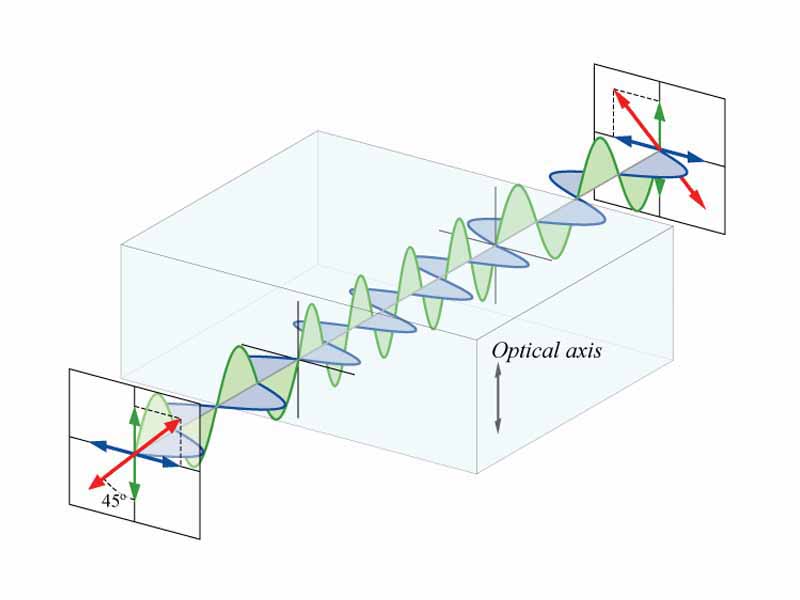A half-wave plate. Linearly polarized light entering a wave plate can be resolved into two waves, parallel (shown as green) and perpendicular (blue) to the optical axis of the wave plate. In the plate, the parallel wave propagates slightly slower than the perpendicular one. At the far side of the plate, the parallel wave is exactly half of a wavelength delayed relative to the perpendicular wave, and the resulting combination (red) is orthogonally polarized compared to its entrance state.
Click this LINK to visit the original image and attribution information. Right click on the image to save the 800px teaching JPEG.

